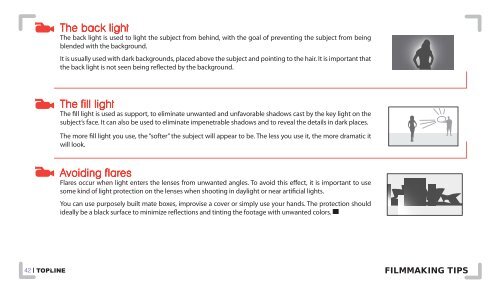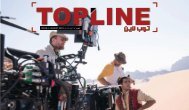TOPLINE March 2019 #3
The Royal Film Commission – Jordan (RFC) is pleased to introduce its online quarterly magazine TOPLINE, featuring articles related to filmmaking with a focus on Jordan. Every issue will put the spotlight on a specific topic, highlight some film-related activities in Jordan, offer a space for film buffs to express themselves, and allocate a special section for film and book reviews as well as filmmaking tips. We hope you will enjoy reading it as much as we enjoyed preparing it.
The Royal Film Commission – Jordan (RFC) is pleased to introduce its online quarterly magazine TOPLINE, featuring articles related to filmmaking with a focus on Jordan. Every issue will put the spotlight on a specific topic, highlight some film-related activities in Jordan, offer a space for film buffs to express themselves, and allocate a special section for film and book reviews as well as filmmaking tips.
We hope you will enjoy reading it as much as we enjoyed preparing it.
You also want an ePaper? Increase the reach of your titles
YUMPU automatically turns print PDFs into web optimized ePapers that Google loves.
The back light<br />
The back light is used to light the subject from behind, with the goal of preventing the subject from being<br />
blended with the background.<br />
It is usually used with dark backgrounds, placed above the subject and pointing to the hair. It is important that<br />
the back light is not seen being reflected by the background.<br />
The fill light<br />
The fill light is used as support, to eliminate unwanted and unfavorable shadows cast by the key light on the<br />
subject’s face. It can also be used to eliminate impenetrable shadows and to reveal the details in dark places.<br />
The more fill light you use, the “softer” the subject will appear to be. The less you use it, the more dramatic it<br />
will look.<br />
Avoiding flares<br />
Flares occur when light enters the lenses from unwanted angles. To avoid this effect, it is important to use<br />
some kind of light protection on the lenses when shooting in daylight or near artificial lights.<br />
You can use purposely built mate boxes, improvise a cover or simply use your hands. The protection should<br />
ideally be a black surface to minimize reflections and tinting the footage with unwanted colors.<br />
42<br />
FILMMAKING TIPS








